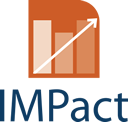Finland – Tax credit for domestic help
| Criteria | Description | |
| Description of the measure | Measure | Tax credit for domestic help “kotitalousvähennys” |
| Country | Finland | |
| Managing Authority | Finnish Tax Administration | |
| Legal Basis | Act on Domestic Work Temporary Tax Deduction (“Laki Kotitalousvähennyksestä”) | |
| Launched in year | 2001 (pilot project was launched in 1997) | |
| Main objectives | Discourage undeclared work and encourage formal employment in domestic services. | |
| Nature and type of public intervention | The support acts on the demand side by granting users a tax deduction/credit up to €2 400 per year per person (€ 4 800 per household) for expenses over € 100 to cover :
Eligibility is restricted to users which have not already been supported through care policies. There were 390 000 users of the tax credit scheme in 2013. |
|
| Type of service providers and the competition between them | Both profit and non-profit organizations are providing services within the tax credit scheme. It seems that no authority has a comprehensive picture of the total household sector and its personnel. However, it has been estimated that in 2011 there were:
The household tax deductions covers only 40% of their turnover. |
|
| The price level and price setting mechanism | Prices are market-rules based. Competition in terms of price in the household services is known as being extremely high. | |
| Type of employment relations | Workers can either be employed by private provider (i.e. triangular relationship) or directly by the user (i.e. direct employment relationship).
Over 90% of the household involved purchased the service from a private provider and only 10% employed the worker directly. |
|
| The administrative framework and the role of the public authority | The National Supervisory Authority for Welfare and Health (Valvira) and Regional State Administrative Agencies (AVIs) are in charge of supervising household works in terms of work quality and sufficient manning of working places. | |
| Type of services | The following activities are allowed :
|
|
| Target groups (users and workers) | Employers/purchasers | |
| Effects | Employment | This scheme covers about 10,000 working hours per year.
Many measures and incentives apply to the PHS sector which makes it difficult to attribute employment effects to a single measure or incentive. It has been estimated that there were 4,903 persons working under different titles relating to the household services in 2012. |
| Creation and/or fostering of PHS activities | 10 000 FTE jobs created of which around 1 000 FTE in the housework sector. | |
| Reduction of undeclared work | Share of undeclared work decreased from 60%to around 25%. | |
| Better working conditions | No information found. | |
| Better conciliation of work-life balance | No information found. | |
| Budgetary effects | Public costs | Taking only into consideration household services (i.e. excluding home repairs), the total cost of the tax incentives was €11 million in 2004.
The cost of each new job created in gross terms (9 950 gross jobs) is superior to €11 000. |
| Earn back effects | For the year 2004, the earn-back effects were estimated at €12,7 million. | |
| Net cost | As such, it results in a net benefit for the State estimated at €1,57 million.
The net cost of each new job created (3 550 net jobs) in net terms (i.e. jobs that would not exist in the absence of the tax incentive) is more than €31 000. However, taking into account the diverse earn-back effects of each “net” job created, each new created job would return €3 800 to the State. |





